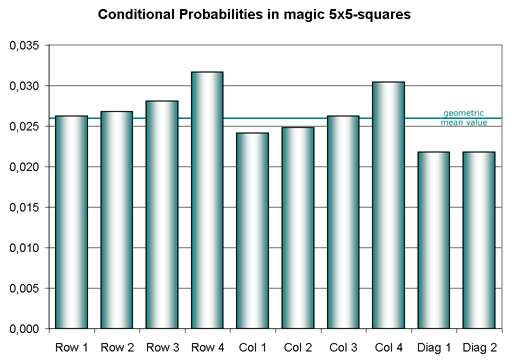What about the second row?
What is the conditional probability pr2 that row 2 is magic too?
It is a little greater than p.
But we don't mind and write approximately: pr2 ≈ p.
Go on with pr3 ≈ p and pr4 ≈ p.
Order 5 is the greatest order where we are able to determine these conditional probabilies exactly.
This was first done by the Frenchman Francis Gaspalou in 2005.
The diagram also shows the probabilities of columns and diagonals, calculated 2005-11-24.
The coloured horizontal line shows the geometric mean value pmean of the 10 probabilities.
Click on the diagram in order to enlarge it.
